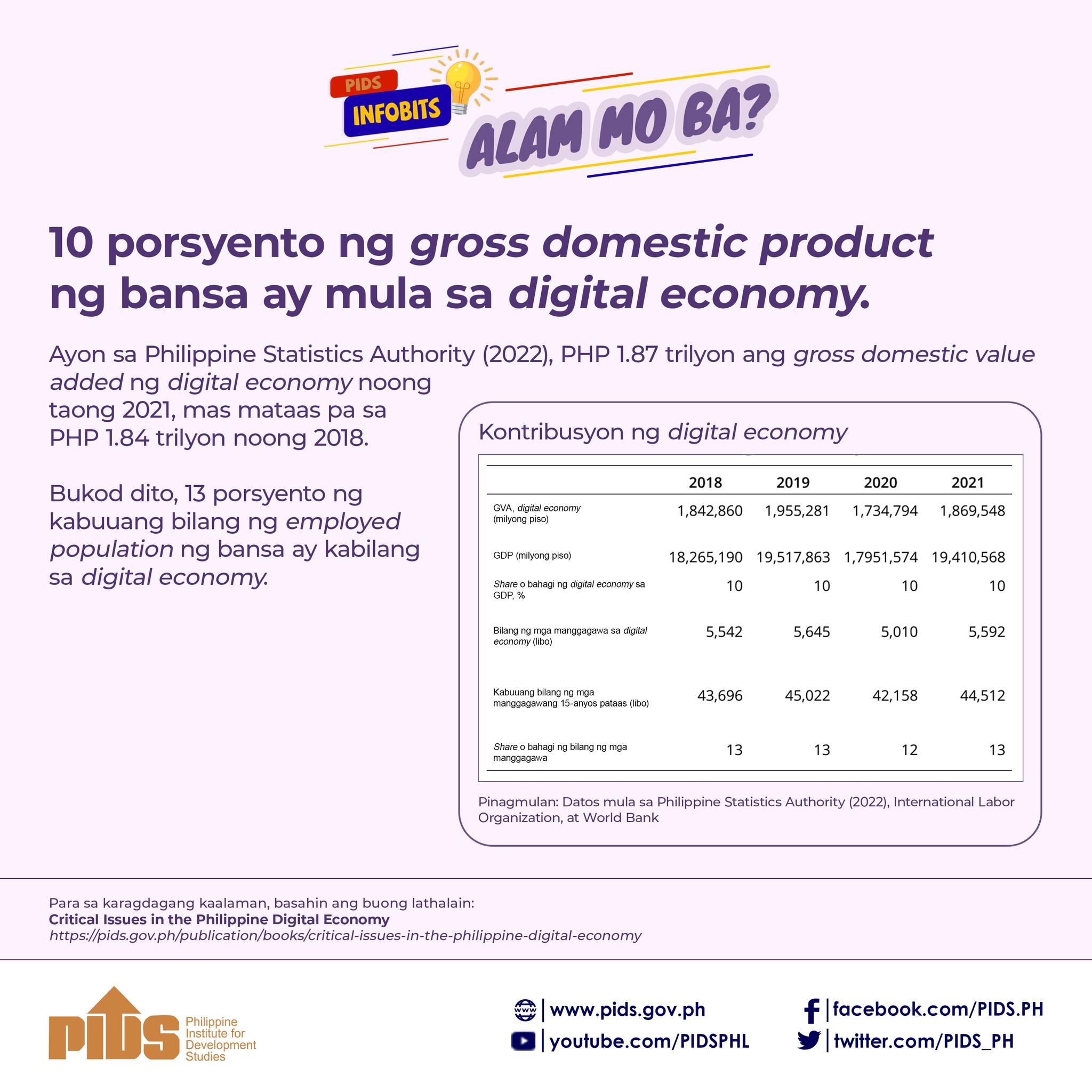The economy remains robust as it leads almost all other Asian countries, with its high forecast of 6.7-percent growth for 2018, but must not be the basis for complacency owing to a host of uncertainties ahead and the widening inequality amid all the sustained growth.
This can be gleaned from a presentation by economist Gilbert Llanto, PhD, before the third Katipunan Conference held recently at the UP Law Center. Llanto’s presentation was his valedictory paper as he retires as president of Philippine Institute of Development Studies, a think tank under the National Economic and Development Authority.
A cut above the rest? From 2012 to 2016, economic growth averaged 6.6 percent, thanks partly to macroeconomic fundamentals during President Aquino’s administration, despite all the shortcomings and corruption that have occurred.
Citing World Bank statistics from 2012 to 2016, Llanto said we were behind China’s average growth of 7.3 percent, Japan’s 7.3 percent, South Korea’s 2.8 percent, Indonesia’s 5.3, Malaysia’s 5.1 percent, Singapore’s 3.3 percent, Thailand’s 3.4 percent and Vietnam’s 5.9 percent. The smaller economies posted higher averages, which are understandable coming from low bases, thus, Cambodia grew an average of 7.2 percent, Laos, 7.6 percent and Myanmar, 7.3 percent.
For 2018, our 6.7-percent growth is remarkable compared to China’s 6.3 percent, Japan’s 1 percent, South Korea’s 2.8 percent, Brunei Darussalam’s 1 percent, Indonesia’s 5.2 percent, Malaysia’s 4.9 percent, Singapore’s 2.7 percent, Thailand’s 3.3 percent and Vietnam’s 6.3 percent. Countries with higher growth rates for 2018 are Cambodia with 6.9 percent, Lao PDR with 6.8 percent and Myanmar with 7.2 percent.
Many experts see the Philippines sustaining its robust growth, a cut above the rest, over the coming years, more so with the “Build, Build, Build” infrastructure program.
Sources of growth.
Services contributed 57.4 percent of GDP, mainly from trade and repair and real estate, contributing much of gross value added in Services. But in growth terms, Industry recorded the fastest growth at 7.3 percent during the last quarter of 2017, outpacing Services’ growth of 6.8 percent, while agriculture recovered with 2.4-percent growth, reversing the 1.3-percent decline in 2016.
Although the economy remains consumption-driven with a strong services sector, buoyed partly by remittances of overseas Filipino workers (OFWs), the structure of the economy changed favorably with investments increasing its share of total expenditures from 15.9 percent in 2007, to 28.6 percent in 2017. Total private consumption spending steadily dipped from 71.6 percent to 68.7 percent. Government spending remained stable, while net exports declined from a positive. 2.8 percent in 2007 to a negative -7.8 percent. This is not good if imports are all spent on consumptive expenditures, but positive if imports are most for equipment and investments, increasing the local productivecapacity to produce and export.
But rising inequality is worrisome.
Unfortunately, it is too early to rejoice because of the rising “inequality paradox,” says Llanto. The paradox shows that as global inequality among countries decreases along the Gini Index from 0.8 in 1988 to 0.65 in 2013, inequality within country steadily worsened from 0.20 to 0.35. The higher the Gini Index approaches 1 percent, the worse income inequality gets, and conversely, the closer it gets to zero percent, the more equality is achieved.
Dr. Sally Goerner of Capital Institute and Research Alliance for Regenerative Economics reveals an Oxfam International study that in 2010 the top 388 richest people owned as much wealth as the poorest 50 percent of the world’s population of 3.6 billion people.
By 2014 this was down to 85 people. And if this trend continues, by the end of 2016 the top 1 percent will own more wealth than everyone else in the world combined, Goerner said. She added that the extremely wealthy are also extremely efficient in dodging taxes, and are estimated to have hidden $7.6-trillion financial assets in offshore tax havens.
French economist Thomas Picketty, famous for his best-selling book Capital in the 21st Century was the first to notice, along with Emmanuel Saez that when the top 1 percent wealthy owned 25 percent of total wealth in 1928, the bubble burst, leading to the 1930’s Great Depression years. Again, in 2007 when the top 1 percent owned 25 percent of wealth, this was followed by the 2008 global financial crisis.
In-between, income inequality was less-pronounced with a suspension-bridge-like graph with inequality at less than 10 percent in the 1970s, but started climbing with financial liberalism, followed by 1999 repeal of the 1933 Glass Steagall Act that regulated separately commercial and investment banks. Subsequently, banks were liberally trading even government employees’ pension plans in casino-like hedge funds and derivatives in Wall Street.
Roller-coaster financial markets.
Ever since the last financial bubble burst in 2008, massive liquidity pumping was done through quantitative easing, bailouts, lower reserves, interest rates close to zero, etc., but only increased corporate debt from $8 trillion in 2008, to $14 trillion by early-2017, a 75-percent increase which was spent mostly to buy up their own stocks to drive-up prices, triggering financial growth on paper while the real economy was really collapsing.
This can build up another financial bubble that could burst again, triggering more desperate pressures from warmongers to go to war to boost demand through more arms sales and extract more value from ravaged countries, cluelessly made to believe they need to invest more in military arms, than education and factories that generate productive jobs.
The monetary bailouts have only ballooned Wall Street’s derivatives or fictitious debts to about $750 trillion in 2017, way above US GDP of $15 trillion a year, or bigger than global GDP of $70 trillion. Ironically, while the bailouts simmered down volatile financial markets, they are fueling another bubble, while the real economy is collapsing from neglect. While big banks were rescued, small banks lending to small businesses creating real physical wealth were forced into bankruptcy. From 2007 to 2012 alone, scores of these small American banks closed shop.
Locally, it is advisable for government to match its urban-centered infrastructure program with programs boosting agriculture and rural manufacturing with strong backward linkages with agriculture, because it is here where 76 percent of those below the poverty line resides.
E-mail: mikealunan@yahoo.com












